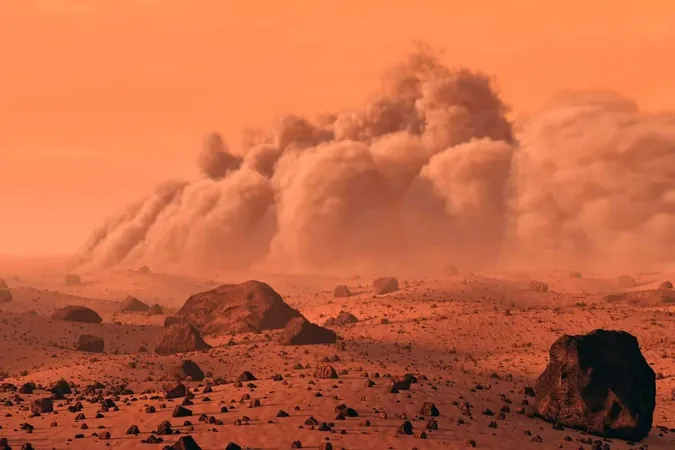
NASA's Biggest Concern? The Hidden Dangers of Martian Dust Might Surprise You
2025-04-06
Author: Jessica Wong
Understanding the Toxic Composition of Martian Dust
A groundbreaking assessment by researchers at the University of Colorado Boulder, published in the journal *GeoHealth*, presents an in-depth look at the health hazards associated with Martian dust. Among the dangerous substances identified are silicates, iron oxides, arsenic, beryllium, and perchlorates—highly reactive compounds that can severely affect thyroid function.
Inhaling these particles over prolonged periods could lead to permanent lung damage and disrupt critical endocrine processes, putting astronauts at serious risk during their missions.
Lessons from Apollo: A Warning from the Past
Justin Wang, lead author of the study and a medical student at the Keck School of Medicine, draws parallels with the Apollo missions, where astronauts encountered lunar dust that resulted in respiratory problems and eye irritation. "While Martian dust may not be the most perilous aspect of going to Mars," notes Wang, "it presents a manageable problem that demands our attention. Developing innovative technologies tailored to the Martian environment could help mitigate these health risks before they arise."
Dusty Martian Environment: The Risks of Exposure
Mars is, by nature, a dusty planet. Co-author Brian Hynek, a geologist at CU Boulder, emphasizes the planet's extensive dust coverage, potentially reaching depths of 10 meters atop its massive volcanoes. "Astronauts will inevitably have dust on their spacesuits and will face regular dust storms," he explains. The remarkably small size of Martian dust, averaging around 3 micrometers, allows it to bypass lung defenses effectively.
"These particles are smaller than what our lungs can expel," Wang warns. "Once inhaled, many dust particles can settle in the lungs and even enter the bloodstream."
Health Risks Drawing from Earthly Experiences
The threats posed by Martian dust parallel health risks that exist on Earth. Silica exposure in industries like mining and glassblowing has long been known to cause silicosis, a severe lung condition. Yet perchlorates, which are abundant on Mars but scarce on Earth, present a distinct challenge—they can disrupt thyroid function and even lead to anemia, posing unique challenges for astronauts.
A Call for Innovative Solutions Before We Reach the Red Planet
Given these serious health implications, there's an urgent need to develop protective measures and technologies designed specifically for Mars. Addressing the dangers posed by Martian dust could be crucial not only for the success of future missions but also for the safety and health of those who venture into this uncharted territory.
As we stand on the brink of interplanetary exploration, the potential hazards that await us on Mars remind us of the importance of preparedness. Will we rise to the occasion and implement the necessary innovations before our first steps on Martian soil? The answer may very well determine the fate of human life on the Red Planet.



 Brasil (PT)
Brasil (PT)
 Canada (EN)
Canada (EN)
 Chile (ES)
Chile (ES)
 Česko (CS)
Česko (CS)
 대한민국 (KO)
대한민국 (KO)
 España (ES)
España (ES)
 France (FR)
France (FR)
 Hong Kong (EN)
Hong Kong (EN)
 Italia (IT)
Italia (IT)
 日本 (JA)
日本 (JA)
 Magyarország (HU)
Magyarország (HU)
 Norge (NO)
Norge (NO)
 Polska (PL)
Polska (PL)
 Schweiz (DE)
Schweiz (DE)
 Singapore (EN)
Singapore (EN)
 Sverige (SV)
Sverige (SV)
 Suomi (FI)
Suomi (FI)
 Türkiye (TR)
Türkiye (TR)
 الإمارات العربية المتحدة (AR)
الإمارات العربية المتحدة (AR)